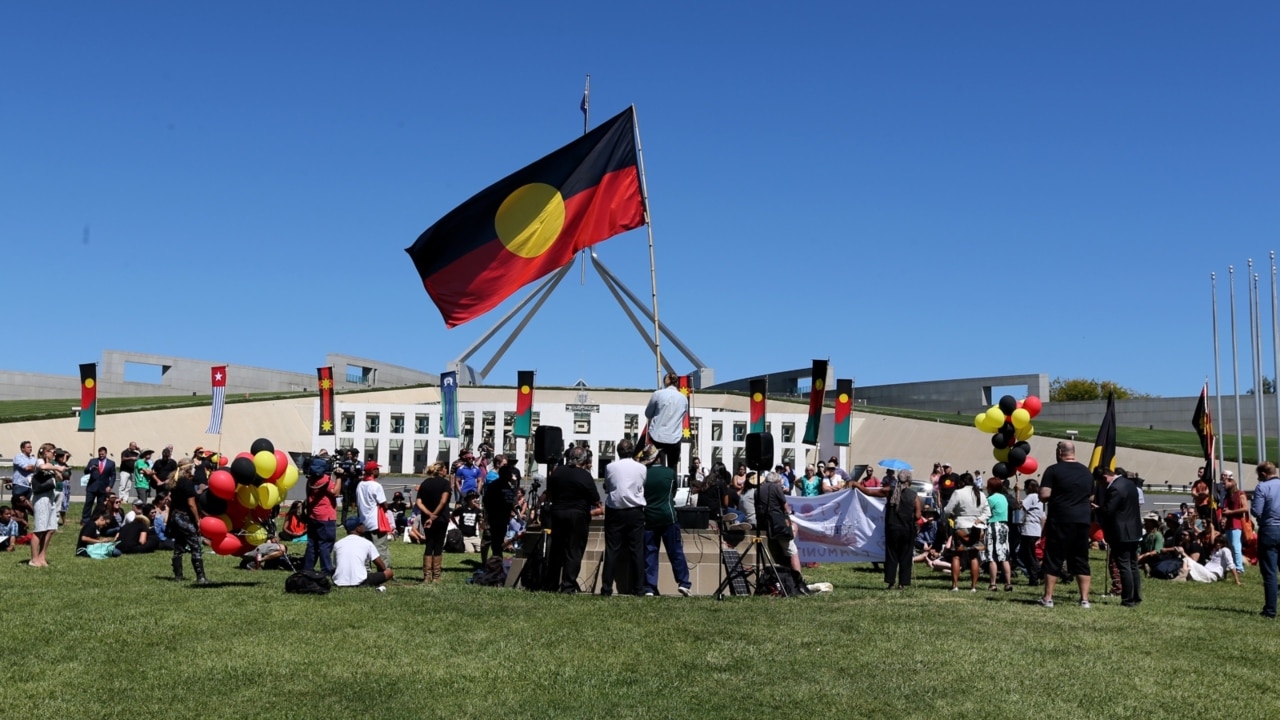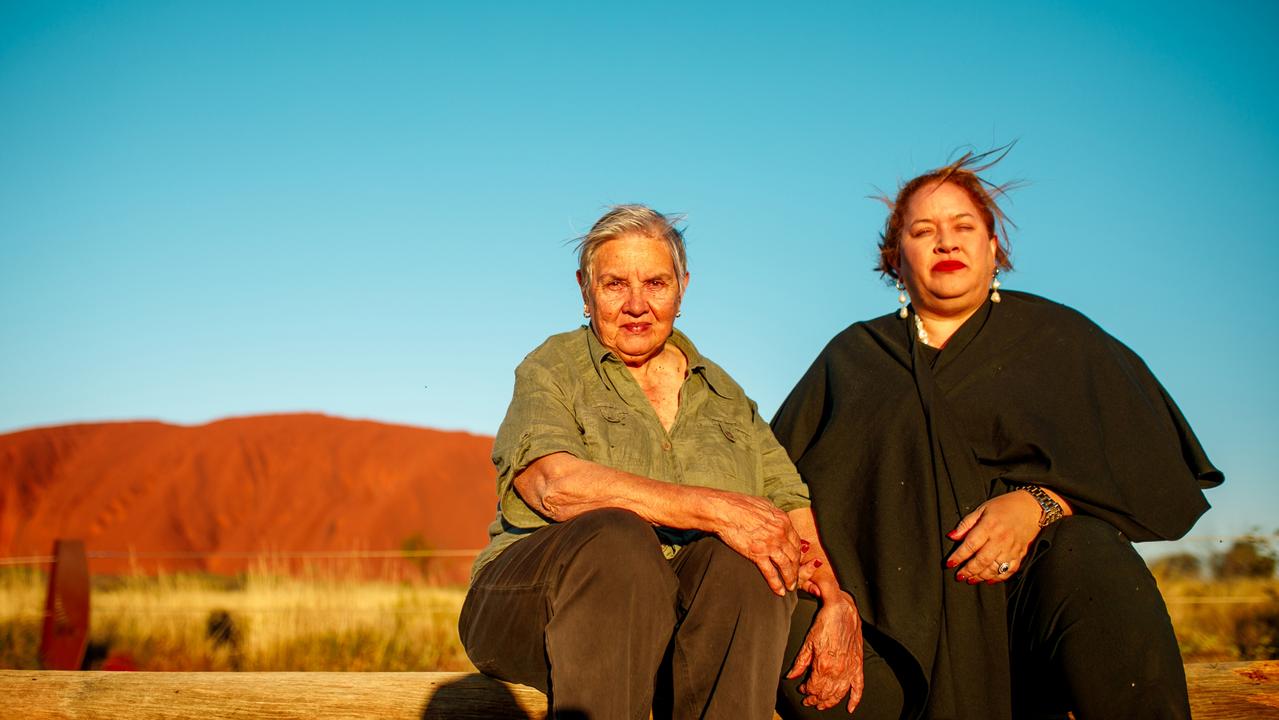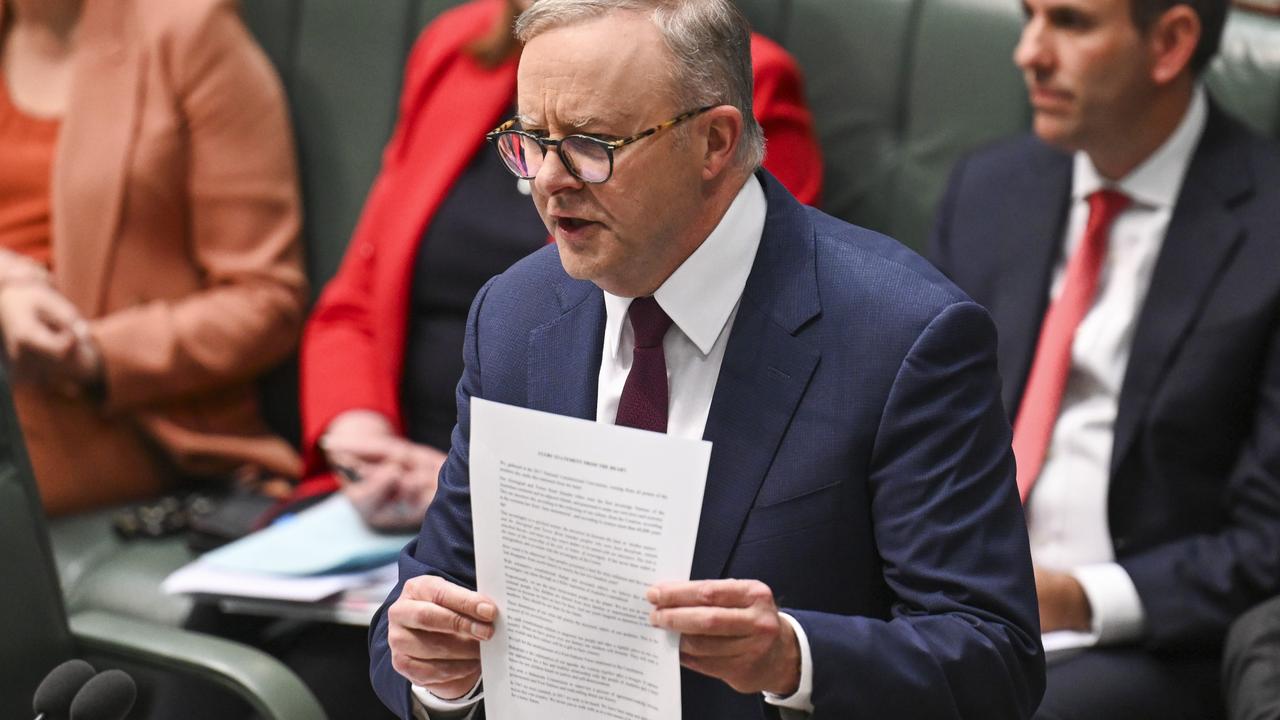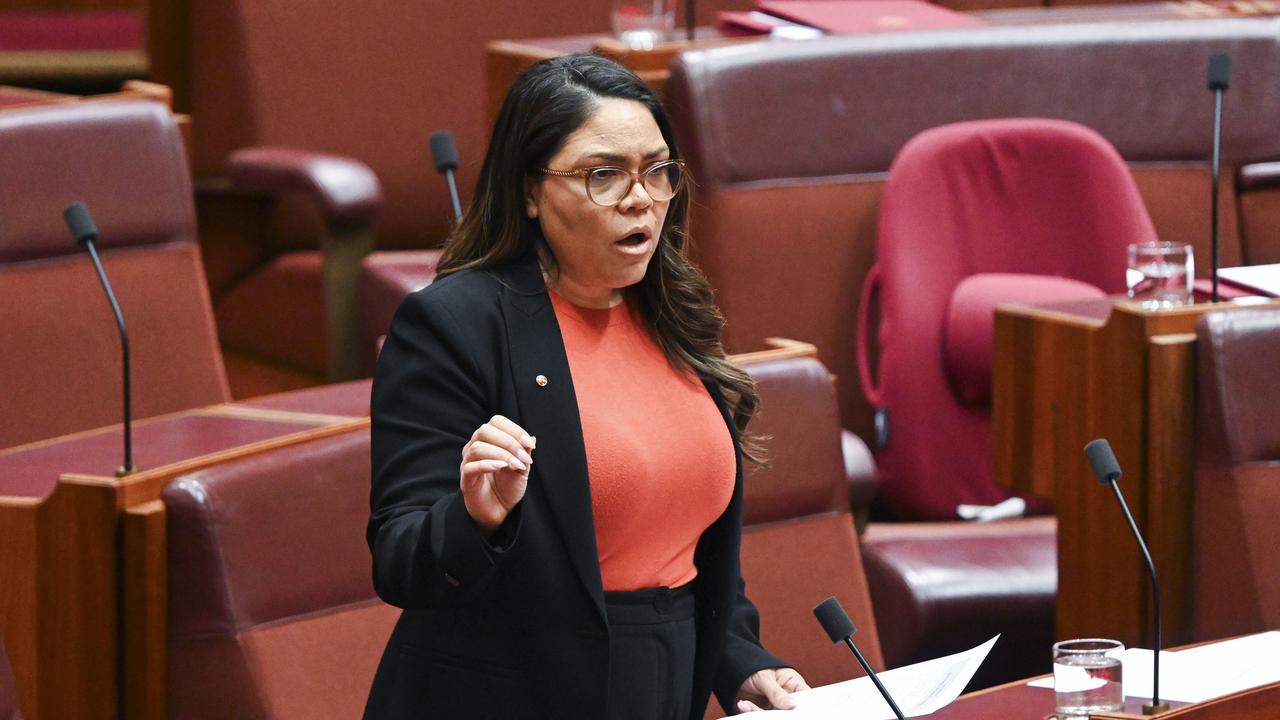‘People were angry’: Uluru Statement architect weighs in on dialogues amid ‘reparations’, treaty controversy
One of the architects of the Uluru Statement has weighed in on the debate about the length of the document - after the PM dismissed a senator’s claim as a conspiracy.

Economy
Don't miss out on the headlines from Economy. Followed categories will be added to My News.
Calls for “reparations” and a “percentage of GDP” to Indigenous Australians in a series of regional dialogues leading up to the 2017 Uluru Statement from the Heart came at a time when participants were “angry” at then Prime Minister Tony Abbott for pulling half a billion dollars in funding, one of the architects says.
Debate over the “one-page” statement — and the contents of an additional 25 pages of background information along with minutes from those regional dialogues — has been raging since last week, after Sky News host Peta Credlin accused Prime Minister Anthony Albanese of misleading voters by not talking about the “full” 26 pages.
Mr Albanese on Tuesday derided the claim as a “QAnon” style conspiracy theory.
Pat Anderson, who was Co-Chair of the Referendum Council and one of the architects of the Uluru Statement, appeared on ABC’s 730 on Wednesday night where host Sarah Ferguson asked her to respond to one commentator describing the contents of the dialogues as “hate-filled and divisive”.

“Let me explain first of all, the Uluru Statement from the Heart is a one-pager, it’s 439 words,” Ms Anderson said.
“Now attached to that is pages called Our Story, and what is recorded there is our version of history. And yes, as you do in these kinds of reports we recorded everything that people said. In another context as well, people were distressed, because we went out not long after Tony Abbott when he was Prime Minister … took about $500 million from Aboriginal programs.”
Ms Anderson said that caused a lot of services relied on by Indigenous Australians to disappear “overnight”.
“People were angry, upset, distressed,” she said.
The Coalition used Question Time today to challenge the government about the Uluru Statement from the Heart. Pat Anderson, an Alyawarre woman who was Co-Chair of the Referendum Council and one of the architects of the Uluru Statement, speaks to @fergusonnews. #abc730pic.twitter.com/jWWMW9Bbto
— ABC News (@abcnews) August 9, 2023
“So the first few hours of every meeting was spent and we sat back and listened and heard what people said to us about what had happened to them … so that did cause a lot of anger and distress. We recorded everything that people said. That’s what’s in Our Story — that didn’t need people to accept that or vote on it, that’s the responsibility of the Referendum Council.”
In the final Uluru Statement, all of the “words and sentiments” were expressed by “somebody at some stage during that whole process”.
“The history of this country is bloody, it’s bitter and it’s full of pain and anger and distress,” she said.
Ferguson asked Ms Anderson how the Indigenous Voice to Parliament would improve health outcomes on the ground.

“If we had a Voice, what would happen, we would sit and wait until the election was held, and then we would go to the new government and say, ‘OK, this is where we got up to with the last mob, and this is where we need to go on from here.’ So we won’t be continually going backwards and forwards, we can actually move forward,” she said.
“But also too with the Voice, resources can be better allocated and targeted to where they are most needed. It’s a universal truism that when you involve the people you’re making decisions for you get better laws, better outcomes and in our case more targeted resources and we won’t have to go back to ground zero every time there’s a change of government. So it’ll make a huge difference to the relationship and how the country in fact operates. It will be better for everybody and it would be a much more equal kind of democracy.”
The Coalition last week seized on Mr Albanese’s promise after entering office to enact the Uluru Statement “in full”, using the prospect of a treaty to attack the Voice referendum as public support for the proposal plummets nationwide.
The contents of the more than 100 pages of additional Uluru Statement material were released under freedom of information by the National Indigenous Australians Agency (NIAA) earlier this year.
On Tuesday Senator Jacinta Nampijinpa Price, the Opposition’s Indigenous Australians spokeswoman, said the agency had confirmed to her office that the full statement was indeed 26 pages.

But in a statement to news.com.au on Wednesday, an NIAA spokeswoman said the Uluru Statement from the Heart “is a one-page document, confirmed by the authors Noel Pearson, Pat Anderson AO and Professor Dr Megan Davis”.
“The National Indigenous Australians Agency (NIAA) released a document under the Freedom of Information Act 1982 (FOI Act), containing the one-page Uluru Statement from the Heart, followed by 25 pages of background information and excerpts of regional dialogues that informed the one-page Uluru Statement from the Heart,” she said.
“Jody Broun, NIAA chief executive officer, has written to Senator Price to provide clarification.”
Writing in The Australian on Thursday, Professor Davis slammed the No campaign’s “smear job”.
“The Uluru Statement from the Heart is one page,” she wrote.
“It’s very simple. The unceasing attempts from the No campaign to take draft documents from conference rooms seven years ago and transcriptions of butchers paper seven years ago to manufacture a controversy over the Uluru Statement is farcical. It reeks of desperation.”
Credlin, meanwhile, wrote in the newspaper that Prof Davis’ stance contradicted what she had “said repeatedly for years in official speeches, documents and in her many media appearances”.
In her 2018 Parkes Oration, for example, Prof Davis said the Uluru Statement “isn’t just the first one-page statement — it’s actually a very lengthy document of about 18 to 20 pages, and a very powerful part of this document reflects what happened in the dialogues”.
“It’s because this part — after page one — is so full of anger, entitlement and the demand to atone for the past 240 years of Australian history that the PM now wants to pretend that it doesn’t exist or has no status,” Credlin wrote.
More Coverage
Originally published as ‘People were angry’: Uluru Statement architect weighs in on dialogues amid ‘reparations’, treaty controversy









